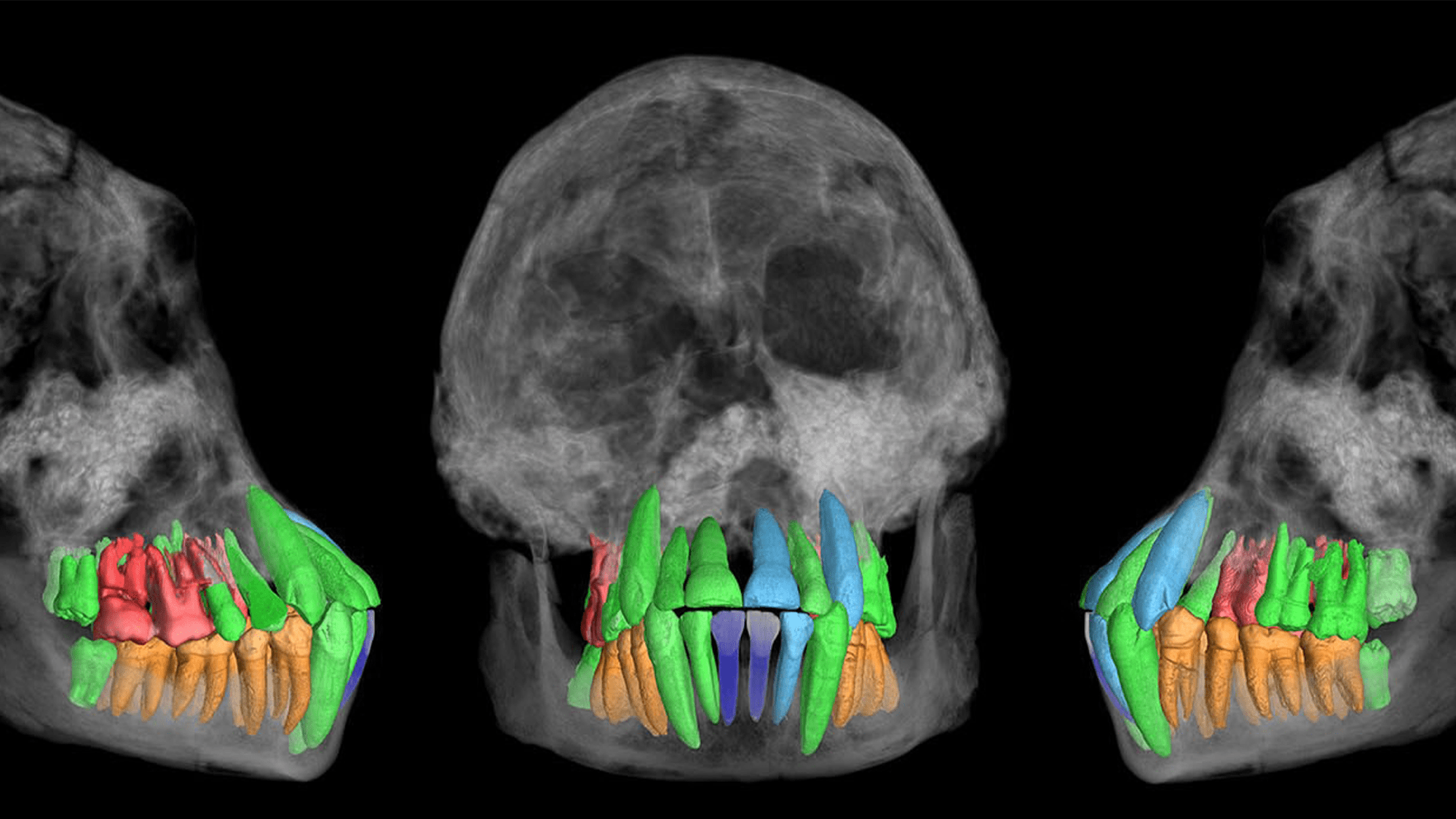Putting together the puzzle of human evolution sometimes comes down to about 32 pieces–our teeth. Several fossil teeth dating back 1.77 million years hold some important clues into our ape and human origins. These early hominins that lived in present day Europe may have had a combination of early maturity that looked like our great ape ancestors and more human-like delayed development. The findings are detailed in a study published November 13 in the journal Nature.
Three major questions
Three big questions stand out among the major mysteries in human evolution. The first is how we evolved to walk so well standing up on two legs. The second is why are our brains so enormous. By comparison, a newborn human brain is roughly the size of an adult great ape’s brain. The third is why do humans develop so slowly with an extended childhood unlike other primates.
“If we compare that to the great apes, a great ape would probably barely have time to go to kindergarten, and then it’s already an adult,” Christoph Zollikofer, a study co-author and paleoanthropologist from the University of Zurich in Switzerland, tells Popular Science. “So it shows you the enormous amount of time that we spend growing up in a very complex social environment.”
[Related: The ‘granddaddy’ of all early hominins walked on Earth a lot longer than we thought.]
Fossil teeth can help us understand how we may have evolved these unique life stages because they preserve incremental growth patterns. Like tree rings, they can be used to infer developmental speeds and timing.
“Trees grow by adding material every year and you can count the growth of the tree. Teeth grow by the acquisition of daily growth rings. Every day, tiny material that takes years to grow is added,” says Zollikofer. “You can cut the tooth and see the growth rings and see how it grew. It can be like a movie of how the tooth developed from birth to death.”
Drilling down
In the new study, Zollikofer and his team examined several teeth that were uncovered over 20 years ago in the Caucasus Mountains of Dmanisi, Georgia. Zollikofer calls this fossil collection a “jackpot” since it included five complete skulls and teeth belonging to early humans of various ages.
“One is a juvenile, the others are young adults, and some who have lost all of their teeth before they died,” says Zollikofer. “So it’s a full span.”
These teeth represent some of the earliest members of the genus Homo outside of Africa and offer an opportunity to investigate the growth processes of early humans. The team used advanced imaging techniques to analyze the dental microstructure of an early Homo individual who died shortly before reaching dental maturity at roughly 11 to 12 years old.

Virtual reconstruction of dental development in early Homo from Dmanisi, Georgia. CREDIT: Vincent Beyrand and Paul Tafforeau, European Synchrotron Radiation Facility, Grenoble, France.
VIDEO: Virtual reconstruction of dental development in early Homo from Dmanisi, Georgia. CREDIT: Vincent Beyrand and Paul Tafforeau, European Synchrotron Radiation Facility, Grenoble, France
The growth rates in the teeth of this adolescent appear to be quicker and more similar to the rate seen in living great apes. However, the individual showed a more human-like delayed development of the back teeth relative to the front teeth. There was also evidence of a late growth spurt in the teeth.
“The trajectory of growth was the most surprising to me,” Debbie Guatelli-Steinberg, a biological anthropologist from Ohio State University who reviewed the study, tells Popular Science. “We tend to think in this field that growth will happen in lockstep to some degree, but that didn’t happen. What they saw was that it was the later period that was very, very fast.”
Guatelli-Steinberg is also the author of a news and views article published in Nature alongside the study.
The grandmother hypothesis
According to Zollikofer, this unique mixture of great ape-like and human-like features in tooth development shows that early Homo had already evolved a pattern of an extended growth phase.
The question of what came first our long childhoods or our bigger brains is a bit of a chicken or the egg situation for anthropologists. Many speculate that our brains got so big because of this extended period of dependence.
[Related: Giraffe grandmas help keep herds going.]
The findings in this study show some evidence that biocultural reproduction–both biological and cultural aspects that influence evolution–and not brain growth alone are behind our long childhoods. Commonly called the grandmother hypothesis, the idea is that there are three generations of children, parents, and grandparents living together.
“This is why they can afford a longer childhood,” says Zollikofer. “Mothers are no longer solely responsible for caring for kids.”
In future studies, looking at the chemical signatures in the tooth enamel could fill in more biological gaps that help put the cultural evidence of human development into greater context.

